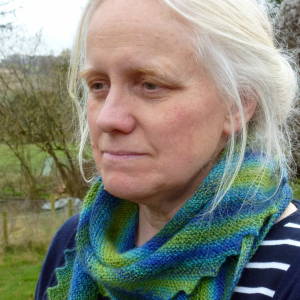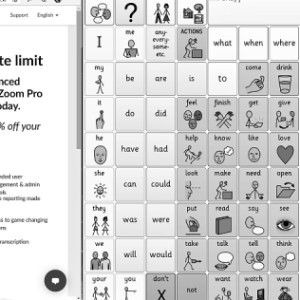Alternative and Augmentative Communication
My daughter J uses AAC because her speech is very hard to understand - she is severely physically disabled with cerebral palsy and also profoundly deaf. Her electronic communication aid is her public voice, which allows her to communicate both out loud and in writing in more or less any situation. As well as talking to people face to face, she loves interacting on social media, where she can share her thoughts or write messages without the pressure of seeing others waiting for her to be ready. It's an inherently slow and demanding way of stringing sentences together, particularly for those who, like her, can't use a touch screen or a mouse and require alternative access methods: J uses switch scanning, activating her voice switch with the vibrations from her throat. However, it has enabled her to do far more than would ever have been possible had she been forced to rely on her near-unintelligible speech, and to interact more fully with those she encounters. The main photo shows her presentations grid, where she can prepare and save longer pieces of text and then speak them out loud, either as a whole or in sections, when required. This piece was something she prepared for an open mic night at an online poetry café: the favourite ice cream in question is Ben & Jerry's Peanut Butter Cup. The extra shows this afternoon's desktop screen at the end of a meeting on Zoom: her AAC software and the Zoom window are side by side on the monitor. She uses her switch for the AAC, and I control Zoom for her with the mouse (and also provide the sign language interpretation, though unfortunately I couldn't photograph myself signing the zoom call!) - so multiple types of communication for our life today, connecting with others from our home through electronic speech and sign language.
In 2018 J made a five minute animation explaining how and why some non-speaking people use AAC, Technology for Talking (or How to speak when you don't have a voice) for the BBC Ideas online platform, with a voice-over spoken on her communication aid. If you would like to understand more about it, this is a good place to start. We are particularly pleased that this little film has been adopted as a training resource in various health and education settings.
Thank you Jensphotos for hosting this Mono Monday with the theme of communication.


Comments
Sign in or get an account to comment.


